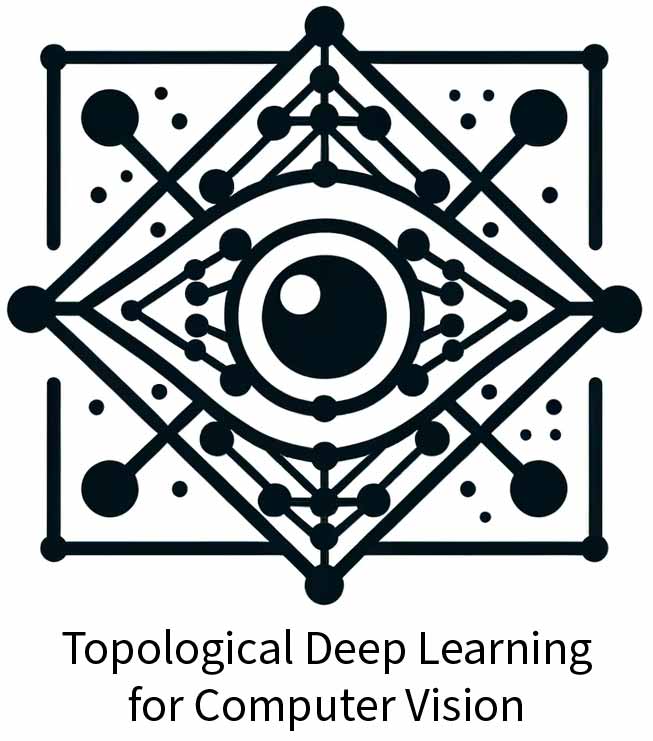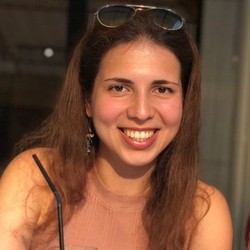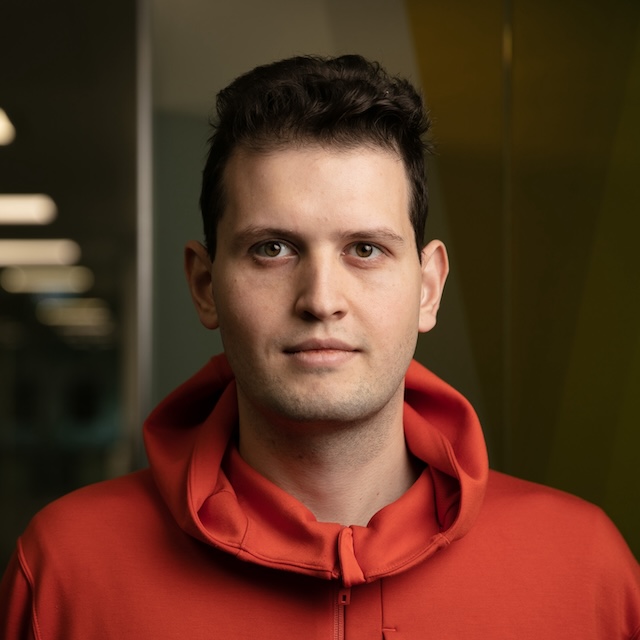
Objects and concepts underlying our environments are frequently defined in relation to one another as well as to other entities. Encoding various kinds of relationships, graphs offer a unifying, natural representation for many forms of data. As such, they sit at the heart of modern computer vision. For instance, scene graphs, correspondence graphs, pose graphs or part graphs are all relational structures heavily used in computer vision. To work with these relational structures, modern, data-driven computer vision methods emerged and are gathered under the umbrella of geometric deep learning. Especially, graph neural networks aim to make learning native to these graph data structures.
Unfortunately, summarising our complex environments and interactions with a simple bag of pairwise relationships (e.g. graphs) is an oversimplification. Oftentimes, data would involve multi-way (n-ary) connections that relate not just pairs of concepts / objects but rather families or groups of nodes. In such cases, we are rather interested in higher-order relationships. Examples include 3D triangular or tetrahedral meshes, multi-agent trajectories, and hierarchical, semantic correspondences. Additionally, such higher-order relationships not only naturally emerge in our everyday environments, but also within the computational graphs of neural networks, in the intricacies of road traffic, between the neurons in our brain, as well as in the structure of molecules or proteins. Topology (and related fields of mathematics) offers a principled, novel way to work with higher-order relations within the data under interrogation. Based on the principles of topology, Topological Deep Learning (TDL) is becoming a rapidly growing frontier that leverages generalisation of graphs, such as simplicial complexes, cell complexes, and hypergraphs, to extract more global information from data, generalising most data domains encountered in scientific computations. Deep learning models developed to learn from data supported on these topological domains constitute the essence of TDL, which facilitates the analysis of higher-order network data, enabling the representation of relations between multiple entities. Consequently, computational models supported on these higher-order domains offer the possibility to tackle novel applications across various fields, such as computer vision. On the other hand, TDL also encapsulates tools of topology that are used to characterise deep neural networks. For instance, it is known that the topology of training dynamics is highly correlated to generalisation performance.What is topological deep learning?
Topological deep learning (TDL) is a rapidly evolving field that uses topological features to understand and design deep learning models. TDL may complement graph representation learning and geometric deep learning by incorporating topological concepts, and can thus provide a natural choice for various machine learning settings, especially in computer vision. TDL focuses on learning directly on topological spaces. In the domains of vision and graphics, these spaces often manifest naturally as 3D point clouds, graphs, or meshes, either acquired in the real world through 3D sensors or designed in computer-aided design software. To date, the field has distinctly differentiated between these data representations, with the optimal choice often remaining elusive and highly dependent on the specific application. The lack of a unifying representation has led vision and graphics researchers to develop specialized architectures for different data types. Examples include PointNet for point clouds, MeshCNN for meshes and 3D GCNs for spatial graphs. Limited efforts have been made to consider a unified domain approach.Why organize TDLCV now?
We believe that going forward we need to rethink how we model relationships intrinsic in data we use. We are confronted everyday with the fact that state-of-the-art methods neglect this important bit. Hence we like to bring attention to higher-oder modeling and its potential in computer vision.What will the workshop aim, briefly?
We will introduce TDL and its current state. We will discuss open problems and promising research avenues in TDL, ranging from practical benefits in computer vision to theoretical foundations. Thereby, we will invite the scientific community to actively participate in TDL research to unlock the potential of this emerging field.May 15, 2024: Speakers announced. 🎉
Feb 15, 2024: TDLCV is live! 🎉
Our invited speakers come from top research institutions and companies around the globe, and are leading figures in the topics covered by the workshop. This diverse selection will prove valuable for academic as well as industry researchers and practitioners. Both practical and theoretical aspects of topological deep learning and its use in computer vision will be covered by the invited lecturers. We will make a selection out of the confirmed speakers, with a potential to include unconfirmed speakers. Both of these are listed below.
We have a packed and exciting day ahead of us!
Good morning everybody! We gladly welcome you to our first workshop, TDLCV 2024. Opening remark will be held by Tolga Birdal. He will also introduce Topological Deep Learning in the context of computer vision.

Some coffee to accompany fruitful discussions.



Untill next time!
Authors: Shihao Zhang, Kenji Kawaguchi, Angela Yao
Authors: Mustafa Hajij, Ghada Zamzmi, Theodore Papamarkou, Nina Miolane, Aldo Guzmán-Sáenz, Karthikeyan Natesan Ramamurthy, Tolga Birdal, Tamal K. Dey, Soham Mukherjee, Shreyas N. Samaga, Neal Livesay, Robin Walters, Paul Rosen, Michael T. Schaub
Authors: Mathilde Papillon, Sophia Sanborn, Mustafa Hajij, Nina Miolane
Here are the diligent people behind TDLCV 2024.
A small community in Topological Deep Learning has formed over the last years and is steadily growing. The applications of this new technology to computer vision is very exciting. With TDL methods advancing, we believe that the time is right to show the potential in computer vision and to bring together researchers from both fields.
Attending the workshop is a great opportunity to gain a glimpse on the basics in learning higher order relationships. Furthermore, invited talks from academia and industry will give an overview of the current developments of the field and our poster session will give you the opportunity to see the current state-of-the-art collected in one place.
Yes, TDLCV will be held fully in-person on 17. June at CVPR 2024. While there will be no live streaming, we will record the talks and make them available on the website. Furthermore, an extended version of the poster session will be presented on the website.
No. Topological deep learning is a very new area and we are hoping to solicit papers in the next versions of this workshop.
The poster session comprises papers previously peer-reviewed and published at major Computer Vision or Machine Learning conferences, focusing on topics closely related to bridge topological machine/deep learning with vision. In addition to this, technical reports that show work-in-progress by researches that previously published in the field of TDLCV are also presented. These works will be clearly indicated as such.